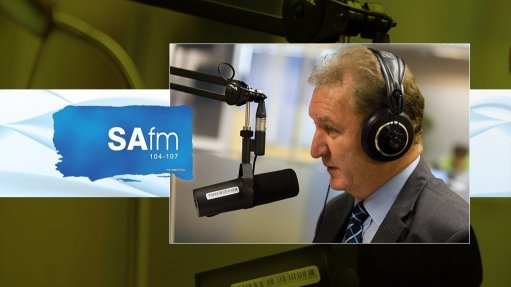
Every Friday, SAfm’s radio anchor Sakina Kamwendo speaks to Martin Creamer, publishing editor of Engineering News & Mining Weekly. Reported here is this Friday’s At the Coalface transcript:
Kamwendo: Anglo American Platinum this week emphasised that South Africa is in a very strong position to generate and even export green energy.
Creamer: Now this sounds ironic. We have got loadshedding at the moment. But what the calculations are showing from very credible organisations, including Anglo American Platinum, is that South Africa is blessed with a capacity to generate more electricity from the wind and the sun then we can use.
There are very few countries in the world like that, which is why the experts calculate that not only can South Africans generate enough green electricity for themselves, but we will have a lot of energy to spare, which would enable us even to export our green energy surpluses. We know that the Northern Hemisphere countries are saying they will definitely import, because they haven't got enough self-generation capacity. South Africans should see this an opportunity of a lifetime that only comes about once in a century, to get into this energy export market firmly, and to not pussyfoot around.
We see that Thulani Gcabashe, who is a former CEO of Eskom, is taking steps to export green ammonia, which is part of the green hydrogen story, from Coega, in the Eastern Cape Then we have got the IDC with Prieska Power in the Northern Cape saying they want to do the same. We see Namibia wanting to do the same. I think we should really throw our weight fully behind this credible opportunity and push it forward vigorously and collaboratively as South Africa Incorporated.
Kamwendo: A study published this week proves that it will be highly profitable to extract the gold out of mine dumps on the West Rand.
Creamer: This is another opportunity. We see all these dumps between Joburg and Soweto. We know that there is gold in them and we also know that if we clear those big areas of the mine dumps on them, it will release a lot of useable land. We know that large number of people have to travel daily in seemingly endless taxi trips from Soweto to Joburg and then back again.
The spend a lot of time travelling. Why not mine the dumps, earn a log of money from the gold, and release the land so that people can reside on it and live closer to the city. Now, Pan African Resources, which is listed in London and Joburg, has done an incredible study.
They have just looked at the Mogale gold tailings, which are west of Johannesburg near Krugersdorp, and they are saying that the prospects of mining those old mine dumps are so good that they will get back the of R2.5-billion that they invest in them in a mere three and a half years, for a project that has a 13-year life plus a likely extension to take the total to 21 years with the Soweto cluster added in. It is low cost for long life and they are sure to go ahead with this mining near Krugersorp, but there can be a much bigger picture here if the powers-that-be allow all the dumps between Joburg and Soweto to be mined for their gold at a time when the gold price is high and the costs being estimated by Pan African are very low.
Kamwendo: Capital is being raised in Australia and South Africa to revive a rich but closed copper mine in the Northern Cape.
Creamer: This copper mine should already be going. The company reviving it Orion Minerals is still having to raise capital now in Australia and South Africa. They have been working on the revival of this mine for many years and it could have been up and running now.
But capital for these types of projects can no longer be easily raised, as it was in the past, because the Association for Savings and Investment South Africa (Asisa) – which controls the spending of our provident fund and our pension fund money – is subject to over-strict rules laid down by our National Treasury, which do not permit member of the association to invest even a small fraction of half a per cent of the R7-trillion they are sitting on, in projects of this nature. Yet, very ironically, Australian provident and pension funds, similar to our Asisa member funds, are already invested in this very project.
Being raised is R250-million which will return the Prieska copper and zinc mine to production in a mere 19 months, providing jobs and creating wealth in the Northern Cape. South Africa has enough sources of funding to have got this going years ago. The copper and zinc mine has been there since 1968, when Anglovaal, a major mining house, mined there before closing it in the Nineties when the copper price fell. Orion now has opportunities to revive Prieska, Okiep and also beneficiate sought-after battery metals, but South Africa’s Johannesburg Stock Exchange no longer gets funding for this sort of mining project because of rules laid down by the Treasury, which are absolutely ridiculously strict and do not facilitate analysis of projects of this nature.
We have seen that the smallest investments in this size of project have potential to make returns that are sometimes enormous. Australians see this clearly and are already invested and South Africa then follows on slowly. Treasury must be brought into line not continue to deny South Africa opportunities to invest in South African investments that the Australians are clear-sighted enough to see as compelling.
Kamwendo: Thanks very much. Martin Creamer is publishing editor of Engineering News & Mining Weekly.